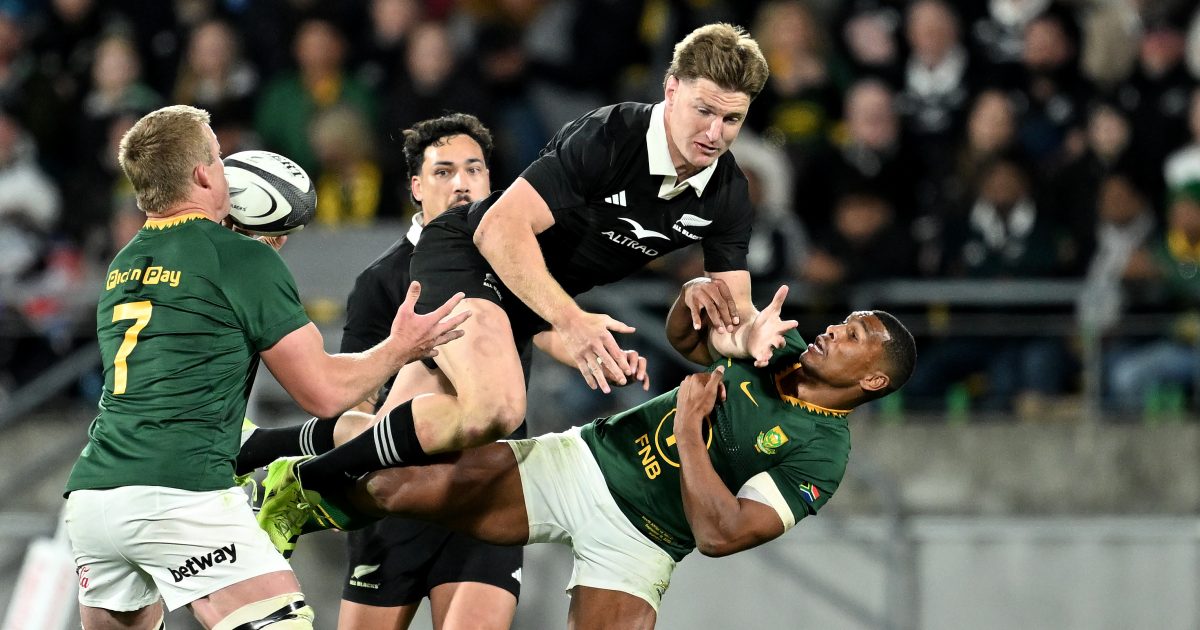Former All Blacks outside back Cory Jane has identified some issues within the All Blacks’ high-ball game, labelling some of the team’s technique in the air “sloppy” after their latest loss at the hands of the Springboks.
Jane was one of the world’s premier high-ball threats during his 55-Test international career, and now handles the coaching of that area, in addition to his defence portfolio, at the Hurricanes in Super Rugby.
The 2011 World Cup winner says a lot has changed since his days on the pitch, with contestable kicks much more frequent thanks to certain law changes. Still, he says the fundamentals of the contest are the same.
“The way I always try to train our boys here (at the Hurricanes) is to get nice and square, get your knee in front to protect you, but also to get separation from the chaser. Because if you let them into your airspace, honestly, it’s a genuine 50/50,” Jane told Sport Nation’s Scotty and Izzy radio show.
“The tough thing about where it is at the moment is that most guys only jump off one leg. And so you saw on the weekend, on the right side where South Africa were kicking, Damian McKenzie and that were jumping off their left leg, so their knee’s opposite, it’s away from where the chaser’s coming.
“So their jumpers are allowed to jump into that airspace, and it becomes an absolute mess. You need to be able, even if you jump off your wrong leg, you need to be as square as possible. So you’re knee can give you a bit of separation and protect you at the same time.
“I just think for all the glove work, or bubble as they used to call it, protecting the catcher, the technique’s got sloppy. So we need to get back to having better technique in the air, to catch more than we drop.”
 Kicks
Kicks 
1:6.2
Kick To Pass Ratio
1:4.8
Jane said there’s a “mind game” element to the contest, knowing there’s a risk of injury when you go into the air. When the All Blacks were at their most dominant aerially with Jane in the team, he said the team’s reputation did a lot of the work for them.
“We had to do them, catch it for our team. You had Mick (Byrne) teaching us technique and all the coaches telling us off, and then we put pressure on ourselves that we were going to get them all.
“And once you catch one or two of them, then everyone thinks you’re bloody good at it. And because everyone thought I was good at it, when I did drop one, man, it was hard to get back on track. Because you start thinking, man, I should be catching all of those.
“But it is a confidence thing, you’ve got to be confident to attack the ball, you’ve got to be confident to get high in the air. And again, with the technique, if you get it wrong, it can still protect you by being nice and square and your landing spot. Whereas if you turn, you can end up on the back of your head.”
Jane went on to highlight how defence has changed over the years, and how defending a high-ball heavy attack puts more pressure on the No. 10 than ever before. In Saturday’s loss to the Springboks, Beauden Barrett and brother Jordie could be seen swapping places ahead of defensive stands so that the taller of the two was in the backfield.
“Most teams put their wingers in the front line on set piece and on defence, and it is your 10 and 15 – unless you want to put your 10 in the front line, and you drop your better catcher. They did put Jordie back in the weekend.
“So you can make adjustments. And not all first fives are bad tacklers, but you might have teams that see your better catcher go in the back.
“You can move it around, personnel, you just don’t want to move it around too much that you confuse everyone on the field. There are ways you can get around it, but the reality is the majority of 10s have to catch high balls these days.”

